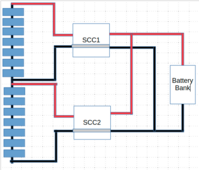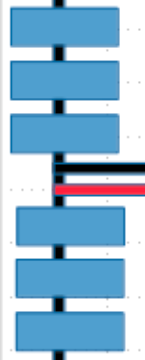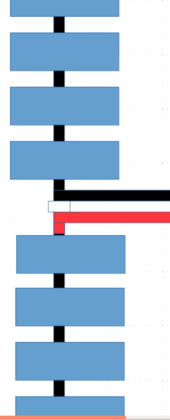Many charge controllers (most in fact) aren't fully isolated from the PV input to the battery side output- so you have one charge controller running at 0v (in relationship to the battery negative rail) and the other at 325v...
This is why I said before that the solar side HAS to be completely independent and separated, and the charge controller's connected only on the battery side...
(a hybrid inverter is just a 'charge controller and an inverter in the same box')
I have come across this far to often in the past when people share a common bus from multiple parallel arrays, and switch from one brand of charge controller to another- PWM could switch on either the negative or positive side and MPPT is usually (but not always) coupled on the negative side... So what works with one controller may not work with another...
The ONLY way to 'fix' this issue is with switching the array with appropriately rated DC relays ($$$) so it is either in series when the pumps VFD is running, or separated mid string when it isn't and the inverter is running/charging...
(or use a 1000V inverter/charge controller that can 'straddle' the whole string... again very few 'consumer level' inverters/charge controllers exist in this voltage range, as it is in the 'industrial' level equipment that you find them...
Be VERY cautious playing at these voltage and power levels- I seriously discourage non trained people from 'experimenting' with them- you can strike an arc that is VERY hard to extinguish and can jump quite long distances, and these voltages are LETHAL...
( I was trained with voltages and power levels in this range (a bit higher actually, 1600vDC at 20Ka on the electric trains lol) and am all too familiar with the dangers they present- you don't get a second chance with this stuff...)
This is why I said before that the solar side HAS to be completely independent and separated, and the charge controller's connected only on the battery side...
(a hybrid inverter is just a 'charge controller and an inverter in the same box')
I have come across this far to often in the past when people share a common bus from multiple parallel arrays, and switch from one brand of charge controller to another- PWM could switch on either the negative or positive side and MPPT is usually (but not always) coupled on the negative side... So what works with one controller may not work with another...
The ONLY way to 'fix' this issue is with switching the array with appropriately rated DC relays ($$$) so it is either in series when the pumps VFD is running, or separated mid string when it isn't and the inverter is running/charging...
(or use a 1000V inverter/charge controller that can 'straddle' the whole string... again very few 'consumer level' inverters/charge controllers exist in this voltage range, as it is in the 'industrial' level equipment that you find them...
Be VERY cautious playing at these voltage and power levels- I seriously discourage non trained people from 'experimenting' with them- you can strike an arc that is VERY hard to extinguish and can jump quite long distances, and these voltages are LETHAL...
( I was trained with voltages and power levels in this range (a bit higher actually, 1600vDC at 20Ka on the electric trains lol) and am all too familiar with the dangers they present- you don't get a second chance with this stuff...)





